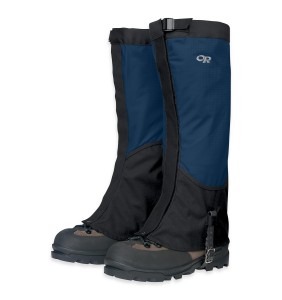How To Prepare Your Gears for High Altitude Trekking – Part 2
Head-to-Toes gears:
1. Hat — Prepare one waterproof hat that can serve as sun shade hat. Prepare one warm, windproof and waterproof winter hat that covers your ears, and one windproof fleece hat. A windproof fleece hat is useful to protect your head from losing heat during nightime when you are inside your sleeping bed. In addition, it can be used as an extra layer to your winter hat when the weather gets bitter cold.
 2. Sunglasses — UV radiation at high altitude is very strong. Be sure you bring sunglasses with 100% UV protection; polarized sunglasses is a plus. Sunglasses also serve as a purpose to block strong wind blowing into your eyes. Bring ski goggles if you are climbing above 7,000 meters in a windy condition.
2. Sunglasses — UV radiation at high altitude is very strong. Be sure you bring sunglasses with 100% UV protection; polarized sunglasses is a plus. Sunglasses also serve as a purpose to block strong wind blowing into your eyes. Bring ski goggles if you are climbing above 7,000 meters in a windy condition.
3. Sunscreen — UV radiation at high altitude is very strong. You need to reapply sunscreen on the exposed skin at least every two hours.
- SPF 15 blocks 93% of UVB rays
- SPF 30 blocks 97% of UVB rays
- SPF 50 blocks 98% of UVB rays
4. Lip Balm — your lip will lose moisture fast due to dry and cold weather condition at high altitude. Apply lip balm as needed to relieve chapped or dry lips.
5. Neck gaiter or balaclava — Neck gaiter covers neck only; whereas, balaclava provides coverage from head, nose, mouth down to neck. The purpose is to keep the covered area warm. Pick your own choice, or do a mix and match depending on the weather condition and temperature.
6. Layers of clothes — When preparing for garments, always consider breathable and moisture wicking garment since you will be active most of the time.
a. Base layer — to keep you dry.
A good base layer can wick moisture away, allow your skin to breath and keep you dry while you are active. There are light-weight, mid-weight and heavy-weight base layer. Heavy-weight base layer is thicker than mid-weight and light-weight base layer. It is suitable for cold weather.
b. Mid layer — to provide warmth.
Mid layer also comes with different weight or thickness. If you are going to a cold and windy place, be sure to look for wind resistant, breathable, quick dry, and heavier weight fleece.
c. Shell layer — to protect you from wind and water.
Types of shell layers are: Soft shell and Storm shell (hard shell). A good soft shell has the property of water resistant, wind resistant, 4-way stretch and breathable. A good storm shell will own the property of waterproof, windproof, breathable and has stretch panels. A storm shell is also known as high performance rain jacket. Remember in the old days when people used plastic rain coats? Those don’t have stretch panel and it is not breathable. Thus, when your body heat generates humidity and condenses inside the coat, it will build up moisture and eventually dampen your garments. Beware not to replace soft shell with storm shell because storm shell is not as breathable and not all types of storm shell are insulated.
d. Winter jacket — down jacket, synthetic jacket.
Now, you have learned three different types of layering and what it can do for you. You can combine them (mix and match) for practical use according to changes in temperature.
7. Layers of pants — similar concept applies here as in layers of clothes.
a. Base layer
b. Mid layer
c. Shell layer
d. Snow pants
8.Glove or Mitten — Prepare:
a. At least one waterproof/windproof gloves (required)
b. Heat reflective glove liner (optional)
c. Snow glove or mitten. Mitten tends to keep your fingers warmer as your fingers are not compartmentalized. However, gloves give your more freedom on your fingers.
9. Gaiters — Gaiters are useful if you are planning to trek in muddy areas. Gaiters will keep lower half of your pants, socks and boots dry and clean. It will also increase the temperature on your lower leg and ankle.
 10. Socks
10. Socks
a. Liner (optional)
b. Merino wool mountaineering socks — Most people tend to sweat their feet in a cold weather. Merino wool can keep your feet dry. Keeping your feet dry in a cold temperature is a great idea. Mountaineering socks provide more cushion and therefore, it is more comfortable for trekking.
11. Waterproof hiking boots — Waterproof hiking boots will keep your shoes and socks dry in wet weather condition or terrain.
12. Under garments — make sure you bring a light weight, breathable and easy-to-dry undergarments. The benefit of easy-to-dry undergarments is when you need to wash it, it will dry quickly.
Click here to move on to Part 3 – Sleeping Gears.




